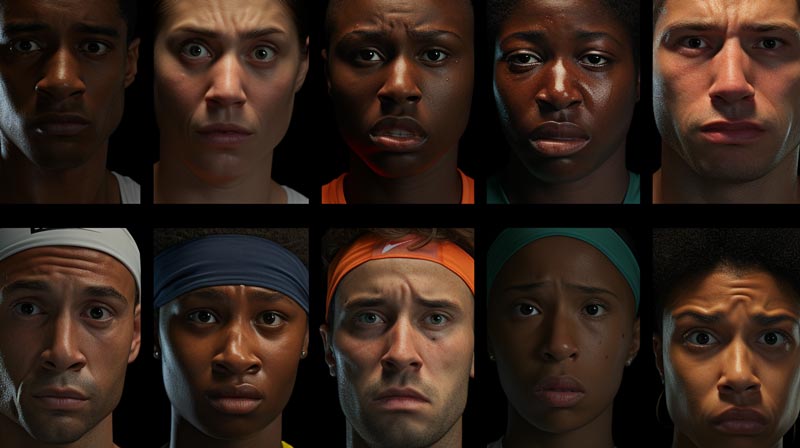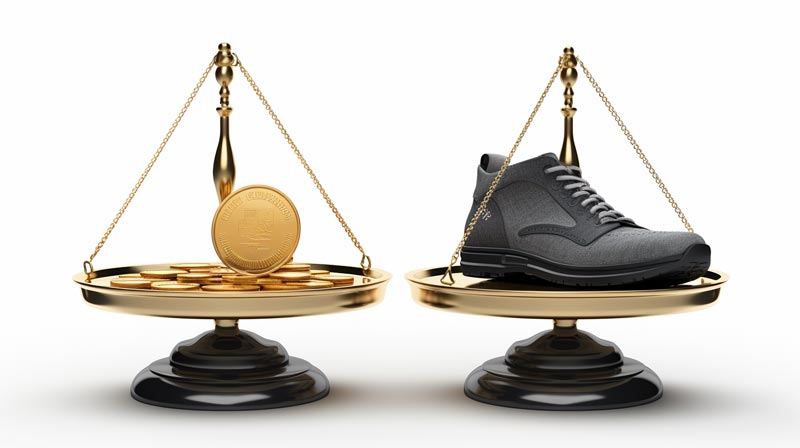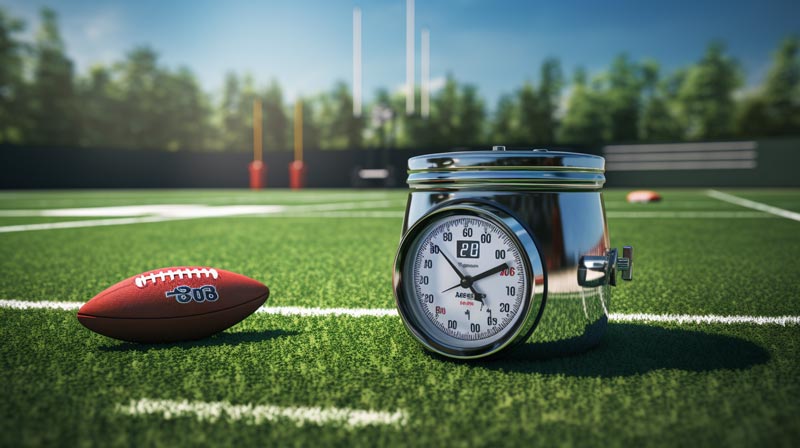An Introduction to Bullying in Elite Sports
“Bullying in Elite Sports” is a hot topic. More athletes are sharing their experiences. They talk about bullying and toxic culture in their programmes. Over the years, I’ve read many such articles. They detail the experiences of young and seasoned athletes who have faced bullying within these high-performance environments.
Recently, my friend Kirsty shared a BBC article with me. It was titled ‘Toxic swimming clubs: ‘We are not in the military‘. The article focused on athletes from the Loughborough University Performance Swimming programme. This place is close to my heart. The narrative echoed stories I’d read about athletes in rowing, cycling, and gymnastics programmes.
Forming an opinion on this issue was challenging. The line between pushing an athlete and bullying is often blurred. Kirsty challenged my perspective with a poignant question. She asked:
So bullying Philip Schofield is bad, but bullying athletes is not?
This question was Kirsty’s way of calling me out on double standards, reminding me of a post I wrote about Philip Schofield and bullying.
Her question prompted me to reflect. I decided to approach the topic of bullying in elite sports with a more analytical eye. This conversation is necessary and a subject close to my heart due to my connection to Loughborough University.

Loughborough: A Crucible of Growth
Loughborough University, my old stomping ground, holds a special place in my heart. It resembles the classic British advert where army recruits declare, ‘I was born in London, but I became a man in the Royal Air Force.’ That’s how I feel about Loughborough. Born and raised in East London, I came of age at Loughborough University.
This statement might sound flippant, but it’s the truth. I spent four years there as an undergraduate, then another four on my doctorate. After a year away, I returned for postdoctoral research for five more years. So yes, Loughborough means a lot to me.
The recent article about bullying in elite sports has sparked a flurry of comments from past and present students, employees, and professors. The consensus? Loughborough should be doing more. I agree. Loughborough has often been quick to pass judgement from atop a mountain. At the same time, their own housekeeping leaves much to be desired. It’s a classic case of ‘those who live in glass houses shouldn’t throw stones.’
However, there’s a broader debate to be had about bullying in elite sports. It’s a topic many shy away from, as it opens Pandora’s box of issues. It’s easy to take the moral high ground and say it’s wrong. But the nature of elite sport blurs the line between bullying, encouragement, and stating the hard facts.
Weight is a significant issue for many, especially young and elite athletes. It can lead to mental health issues and impact self-image. But the cold hard fact is that weight affects performance. It’s a reality that coaches and support teams can’t ignore.
In the next section, we’ll delve deeper into the complexities of this issue. But for now, remember that every stone we throw can shatter our glass house.
The Article That Sparked This Post
The article ignited this blog post was a piece by BBC News titled “Toxic swimming clubs: ‘We are not in the military’“. The report shed light on the experiences of elite swimmers who claimed that a toxic culture within their sport had left some careers in ruins and others grappling with long-term health issues.
The past and present swimmers shared their stories following an apology from Swim England’s chief executive, Jane Nickerson, to those harmed by a bullying culture. The allegations ranged from threats of being removed from teams for failing to meet unreasonable weight loss targets to a group of swimmers who dubbed themselves “the Fat Bitch Club” after being told they were too heavy to succeed.
The article also highlighted swimmers’ experiences at Loughborough University’s Performance Swimming programme. Five former swimmers from the programme told the BBC about what they considered a bullying, toxic environment. They spoke of starving themselves before weigh-ins and skinfold tests and of being threatened with removal from the team if they failed to reach skinfold targets.
The article that motivated this post has opened up a dialogue on the issue of bullying in elite sports, and it’s a conversation that needs to continue. The experiences shared by these athletes are a stark reminder of the thin line between motivation and bullying and the urgent need for change.

A Deep Dive into Bullying in Elite Sports
Elite sports are often seen as a world of glory and achievement. However, beneath the surface, a darker narrative unfolds. Across various sports, athletes have been raising their voices against a culture of bullying that has long been brushed under the carpet. This section sheds light on these stories, highlighting the need for a significant shift in elite sports culture.
Swimming: A Torrent of Troubles
A storm has been brewing for years in the tranquil waters of swimming. Stories have emerged of athletes battling not just the physical demands of the sport but also a culture of bullying and body shaming. Olympic medallist Cassie Patten, for instance, has bravely spoken up about her struggle with bulimia, a battle triggered by constant negative comments about her weight. This is not an isolated incident. Many swimmers have joined an online support group, seeking solace in shared experiences and advocating for change.
The closure of Ellesmere College Titans, an elite swimming club, following allegations of bullying further underscores the severity of the issue. The sanction, however, has been met with mixed reactions, with some feeling that the lessons still need to be fully absorbed.
These stories paint a troubling picture of the world of swimming, highlighting the urgent need for a cultural shift. Even the head of Swim England has acknowledged the issue, expressing deep regret for the swimmers’ experiences and vowing to do everything possible to eradicate the culture of bullying.
The focus must extend beyond winning medals to ensuring athletes’ mental and physical well-being. It’s clear that the world of swimming, like many other sports, has some significant waves to navigate.
Athletics: The Fear Factor
The athletics track, often seen as a symbol of glory and achievement, has its share of shadows. This sport made me who I am, but the fear of bullying in elite sports and intimidation is as accurate here as in any other sport.
Top coaches have voiced their concerns about the culture of fear that seems to pervade the sport. This fear is not unfounded. Fayaaz ‘Fuzz’ Caan, a British high jump coach who helped Robbie Grabarz win a silver medal at the London 2012 Olympics, was suspended for three years following a UK Athletics (UKA) investigation into his conduct.
The charges against Caan included creating an atmosphere where bullying was commonplace and acceptable and allowing bullying and harassment to occur in his training group without challenging it. While Caan denied these charges, he admitted that bullying occurred between athletes in his training group.
I know Fayaaz personally and have always admired his motivational coaching style. I remember Fayaaz from my own training days before he became a top coach, and I loved the sessions I did with him. He was full of motivation and had a unique way of coaching. However, it’s important to remember that making a judgement without the full facts is possible. What is clear, though, is that the line between motivation and bullying in elite sports can sometimes blur, and it’s crucial to ensure that it doesn’t cross over into intimidation or fear.
The suspension of a coach of Caan’s stature underscores the severity of the issue. It highlights the need for a culture shift within athletics. The focus again must extend beyond winning medals to ensuring athletes’ mental and physical well-being.
Cycling: Pedalling Against the Wind
Cycling is a sport known for its gruelling physical demands (anyone watching the 2023 Tour de France would have seen this with Jonas Vingegaard and Tadej Pogacar going at it) and has been facing its own uphill battle against a culture of bullying.
The sport’s reputation hit when Jess Varnish, a track cyclist, made allegations of sexism, discrimination, and bullying against Shane Sutton and British Cycling. These allegations were not taken lightly, leading to an independent review of the culture within the world-class performance programme.
The situation worsened when British Cycling was accused of watering down the findings of an internal review in 2012. The report, which included anonymous statements from 40 personnel, was kept private, leading to questions about organisational transparency.
Further allegations surfaced when former British Cycling technical director Shane Sutton was accused of derogatory comments about Paralympic cyclists, referring to them as “wobblies“. This incident further highlighted the need for a significant culture shift within the sport.
These revelations have shadowed the sport’s urgent need for change. Cycling must win this race by ensuring a respectful and supportive environment for all athletes.

Rowing: Piloting Troubled Waters
In the world of Rowing, the waters are not always calm. The sport has had its share of turbulence, with allegations of bullying surfacing and leading to internal reviews. A case in point is the experience of Emily Taylor, a former rower who voiced her concerns about the coaching culture. Taylor’s allegations led British Rowing to conduct an internal review to assess the situation.
The review found that the coaching culture was “hard” and “unrelenting” but fell short of bullying. However, the handling of the double sculls crew of Vicky Thornley and Katherine Grainger was questioned. Thornley’s boyfriend, Rick Egington, a two-time Olympic medallist, criticised the management of Thornley and Grainger’s partnership in the run-up to the Rio Games. Thornley and Grainger won a surprise silver medal in Rio despite the challenges.
These incidents highlight the need for a more inclusive environment in Rowing, with a greater focus on the effects of stress on performance and well-being. Just like the other sports, it’s a reminder that the pursuit of excellence should never compromise the well-being of athletes, but it does.
Gymnastics: A Balancing Act of Skill and Dignity For Dealing With Bullying in Elite Sports
Gymnastics, a sport that demands grace and precision, has been under the spotlight for less admirable reasons. The sport has been marred by allegations of widespread mistreatment, causing British Gymnastics to step aside from a review into these allegations to ensure the integrity and independence of the process.
Prominent gymnasts, including Olympians Becky and Ellie Downie, have shared their experiences of mistreatment, describing abusive behaviour in gymnastics as “completely normalised”. Their revelations have led to establishment of a confidential helpline for British gymnasts who have suffered bullying or abuse.
The sport was also rocked by the experiences of Commonwealth champion Dan Keatings. He described a culture of “bullying and manipulation” throughout his time as a British gymnast, with his retirement bringing a sense of relief rather than a celebration of his career.
These accounts from the gymnastics world highlight the issues of bullying within the sport. The focus is on perfecting routines and winning medals. Now, a cry for the balance beam of gymnastics is not only a test of the skill and agility of athletes but also the integrity and respect of those who guide them.
A Course of Enlightenment: Safeguarding in Elite Sports
In a twist of fate, my exploration into the depths of bullying in elite sports coincided with my undertaking of a coaching safeguarding course. This wasn’t just any course but a prerequisite for renewing my coaching licence. The timing was uncanny, with only a few days separating the completion of my course and the arrival of the article on bullying in elite sports.
Reading the course material, I contemplated the thin line between motivation, encouragement, and challenging an athlete. The section on emotional abuse, in particular, halted me. A moment of introspection, a moment that challenged my own perceptions.
The course outlined four main types of child abuse: physical, sexual, emotional, and neglect. The segment on emotional abuse resonated with me, prompting a re-evaluation of my understanding of motivation, encouragement, and challenge.
This was a wake-up call, a moment of realisation that the line between pushing an athlete to excel and pushing them into distress is fragile. It’s a line that we, as coaches, must tread with utmost care.
Physical, sexual, and neglect – these three types of child abuse are relatively straightforward in their definitions. They involve explicit, tangible actions or omissions that cause harm to a child.
However, emotional abuse, the fourth type of child abuse, is more nuanced. The persistent emotional maltreatment of a child causes severe adverse effects on the child’s emotional development. And can fall into the following:
- Rejecting or ignoring a child completely
- Using degrading language or behaviours towards them, for example, belittling their attempts to improve their performance or telling them they are ‘rubbish.’
- Responding to their attempts to interact with emotional detachment
- Making fun of them, for example, laughing at their appearance or athletic endeavours
- Threatening them or encouraging them to develop self-destructive behaviours, for example, encouraging a person to go on a highly restricted diet or telling someone that they are not succeeding because they are under/overweight
- Preventing the child from interacting socially with other children or adults
- A child seeing or hearing the ill-treatment or severe bullying (including cyberbullying) of another
- Causing children to feel frequently frightened or in danger
- The exploitation or corruption of children
In sports, this could manifest as belittling an athlete’s attempts to improve their performance. Responding to their attempts to interact with emotional detachment, encouraging a person to go on a highly restricted diet or telling someone they are not succeeding because they are under/overweight.
This is where the thin line comes into play. The line between pushing athletes to excel and pushing them into distress is fragile. It’s a line that we, as coaches, must tread with utmost care.
The challenge lies in discerning when motivation and encouragement cross the line into emotional abuse. It’s a grey area, a blurred line that requires constant vigilance and self-awareness. My style of coaching is one where I take the athlete with me. However, when it comes to complex conversations about performance and physical attributes, I do have this conversation in a sensitive and empathetic manner. But as it stands, two different athletes may take this differently.
The prevalence of emotional abuse in the context of “Bullying in Elite Sports” may be a stark reminder of the need for a significant shift in elite sports culture, or we need to get real and realise that complicated conversations cannot be avoided with athletes.

The Pressure Cooker of Elite Sports
The world of elite sports is a pressure cooker. In this high-stakes environment, the drive for success can often overshadow the well-being of the athletes at its heart. The root of this issue lies in the individual sports’ relentless pursuit of winning medals. The program leads and coaches drive this pursuit under immense pressure to deliver results.
Each sport has a program lead, and beneath them are the coaches. These individuals are given targets they must achieve, which are directly tied to the funding they receive from UK Sport.
This funding is performance-related, meaning that depending on how a sport performs within an Olympic cycle, its budget can either increase or decrease. This system naturally creates tension and stress for individual sports as they need the money to continue their programs.
A report from BBC Sport highlights the pressure that comes with this performance-based funding. The report suggests that the funding model can create a culture where success is prioritised over athlete welfare, leading to a high-pressure environment that can contribute to abuse and neglect.
UK Sport is aware of the issues within its ranks. They know the numerous complaints about bullying in elite sports within the different select performance programs. A BBC Sport article reveals that there have been 19 allegations of emotional abuse or neglect of British world-class programme athletes by coaches since 2017, including seven in that year alone. This indicates that the pressure to perform can sometimes lead to unacceptable behaviour.
The pressure and the resulting issues have led to calls for help, with some sports feeling isolated and asking for government assistance in safeguarding. The chair of British Gymnastics has called for the government to establish an independent safeguarding body across all sports to ensure athlete welfare is as crucial as medal table success.
My Views on Bullying in Elite Sports
Harsh language or aggressive behaviour is not the best way to improve an athlete’s performance. Different cultures may approach coaching differently, and some may yield better results. Still, it ultimately comes down to what an individual can live with. I, for one, cannot live with imposing that level of aggression on somebody, as I did not appreciate it very much when competing.
On the topic of weight, this is where we need to have serious conversations. I was introduced to athletics through a high jumper. I distinctly remember his eating habits, especially when the season started. He would hardly eat anything, and the day before competitions, he would spend his time in the sauna to lose body weight.
This was not an isolated case. I was also a training partner to Samson Oni, a 2.31m high jumper. Later, I became part of his coaching team. Like my friend, Samson would travel abroad to competitions, having prepared his breakfast and lunch. It would amuse you if you ever saw it; it used to be a small bowl with a handful of bran flakes. And this would be his routine throughout the whole indoor and summer season.
The reality of elite sports is that an athlete’s weight can significantly impact their performance. Newton’s second law of motion, which states that force equals mass times acceleration, clarifies that the heavier an athlete is, the more power they will need to exert to perform their sport. This is a reality that cannot be ignored when dealing with performance.
However, the way this message is delivered to the athlete is crucial. The issue lies not in the discussion of weight itself but in how it is communicated. The pressure to maintain a certain weight can lead to unhealthy behaviours and contribute to the emotional abuse and neglect we see in elite sports.
Looking at the global landscape, it’s evident that countries doing exceptionally well in sports often have old-school, hardcore coaches or mentality. These cultures have been pulled up in the bullying in elite sports mess. These old-school coaches were employed for results, and in many cases, they excelled in delivering. The consequences, however, were that the environment was harsh. Now we must decide which is more critical: medals or well-being.
The system needs to change from the top to where the funding comes from. But the issue is that UK Sport has to justify that the lottery funding produces the desired outcome. This then feeds back into the Department of Culture, which leads back to the government. So there lies the issue.
If funding is based on performance, which is based on medals, the pressure from the top down will always be enormous, and the athletes will feel the brunt of it. This pressure will not lessen; it will increase. This is because competitive elite sport is improving worldwide as countries become more affluent. This means they have more disposable income and invest in bringing eyes onto their land.
In many developing countries, there is no such thing as athlete well-being; medals are far more critical. If this is the case, UK Sport will be placed under much more pressure because the competition for medals will increase.
In doing so, it means that the different performance programs in the UK will not be able to meet the target, which means that funding will be cut, which places more stress on the program leads for the different sports, and yes, as you guessed it, the pressure will go back onto the athlete. The topic of bullying in elite sports is not going to go away anytime soon.
Final Note on Bullying In Elite Sports
The pressure cooker of elite sports is a complex system with many interconnected parts. The drive for success, the pressure to perform, and the funding model all contribute to a high-stress environment that can lead to abuse and neglect. It’s a system that needs re-evaluation and reform, focusing on athlete welfare and well-being, not just performance and medals.
With its performance-based funding and high-pressure environment, the current system is not long-term sustainable. It’s a system that places undue stress on athletes, leading to bullying in elite sports, emotional abuse and neglect. It’s a system that needs to change.
The change must start from the top, re-evaluating how funding is allocated, and success is measured. We need to move away from a purely performance-based model to one that also considers the welfare and well-being of the athletes. We need to create an environment where athletes are supported and nurtured, not just pushed to their limits for the sake of winning medals.
The pressure to perform will always be a part of elite sports, but it should not come at the expense of the athletes’ well-being. We need to strike a balance between pushing athletes to excel and ensuring their mental and physical health. This is a delicate balance to strike, but it’s necessary to ensure elite sports’ long-term success and sustainability.
However, this brings us to a crucial question. If we refrain from pushing athletes to their limits, are we truly engaging in elite sports? The very nature of elite sport is to strive for excellence, to push boundaries, and to step out of comfort zones. The line between finding that edge and maintaining comfort is a delicate one. If we fail to guide our athletes to that edge, could that be considered neglect?
This topic may warrant further exploration in a future blog post.

